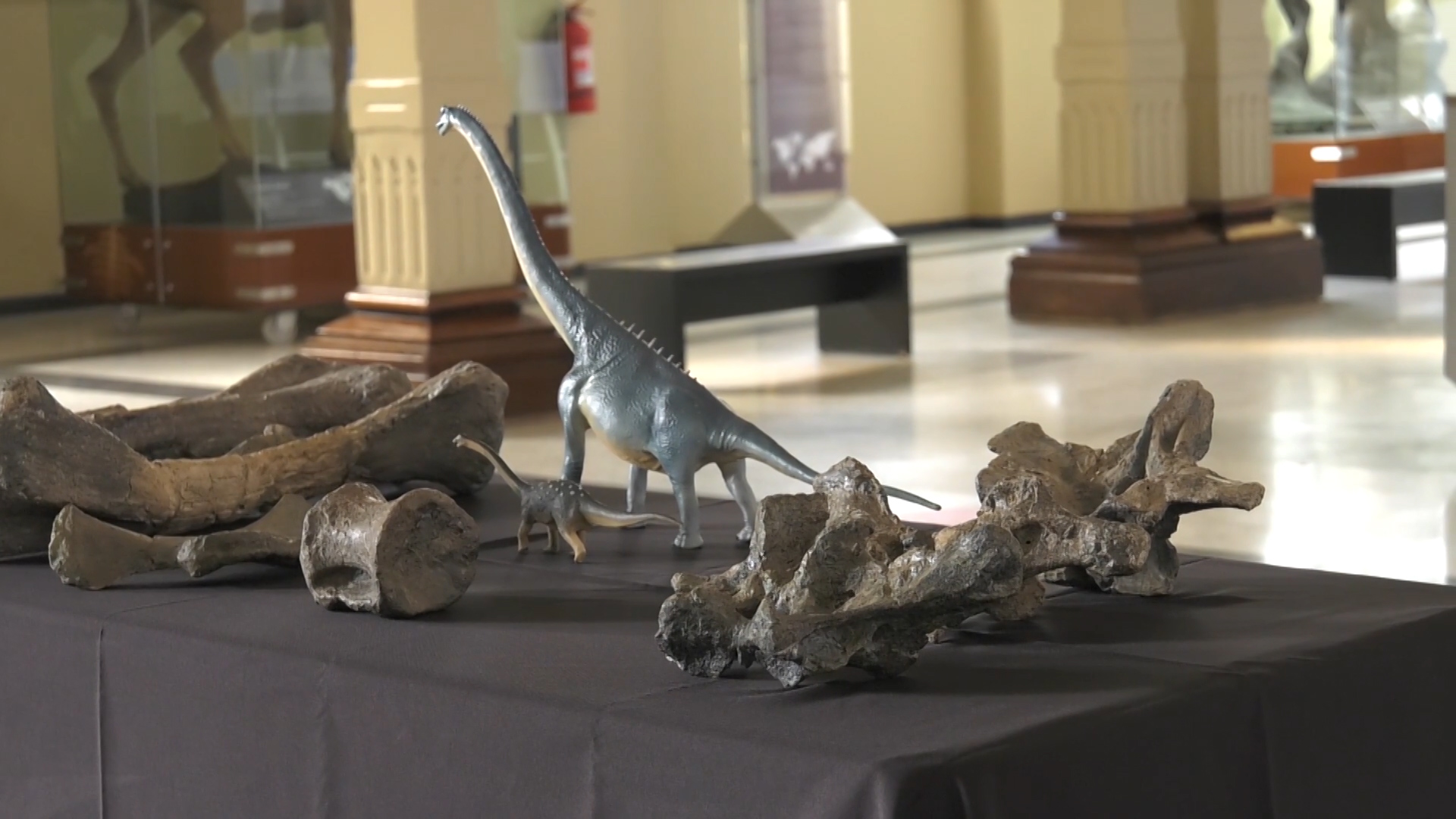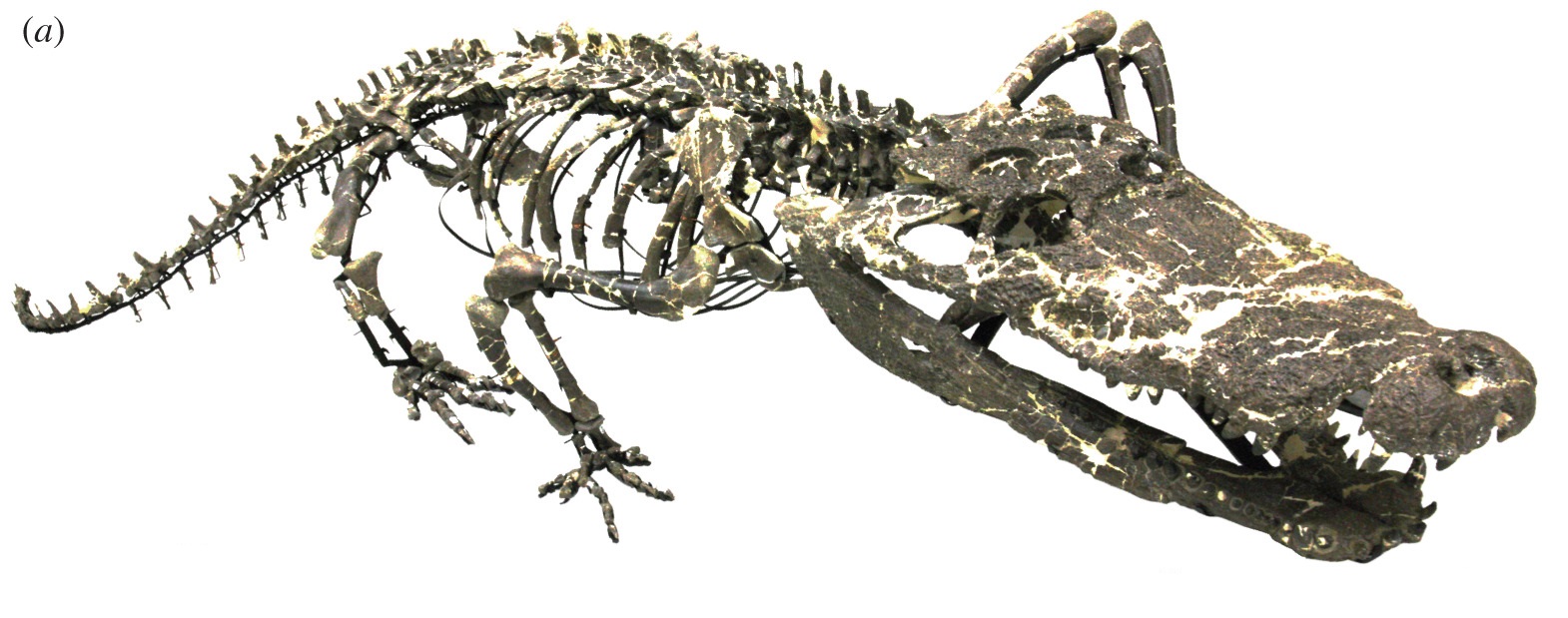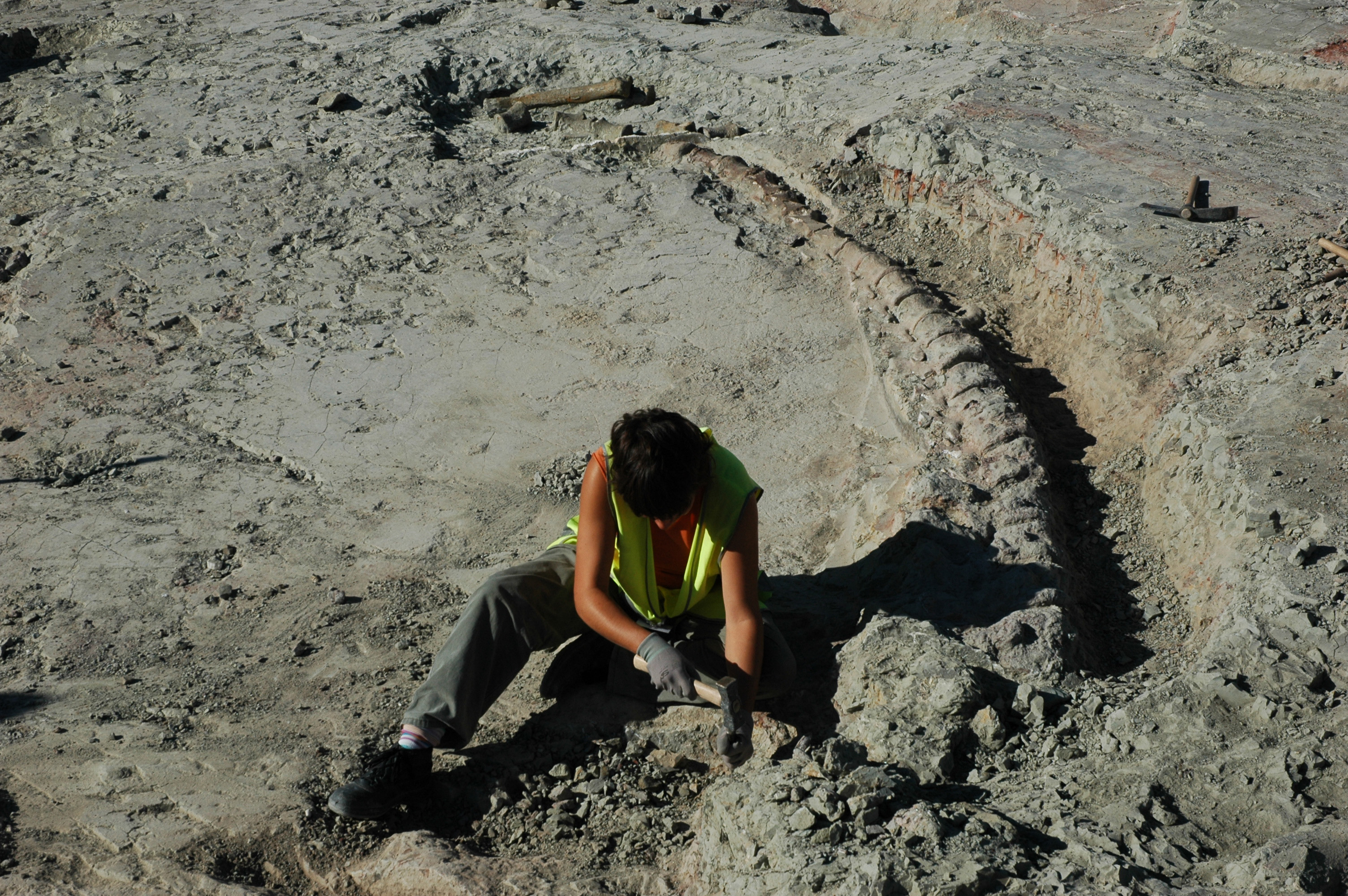|
Arackar
''Arackar'' (meaning "skeleton" in Kunza) is an extinct genus of lithostrotian sauropod, possibly part of the Saltasauridae, discovered in the Hornitos Formation of Atacama Province, Chile, Atacama Province, Chile. The genus contains a single species, ''Arackar licanantay'', described by Rubilar-Rogers ''et al.'' in 2021. Discovery and naming The holotype was discovered in 1993 at Quebrada La Higuera, approximately 75 km (47 mi) south of Copiapó. The fossil material was briefly mentioned by Rubilar-Rogers & Gutstein in 2012 and was found to not be referable to the genus ''Atacamatitan''. In 2021, ''Arackar licanantay'' was named and described by David Rubilar-Rogers, Alexander O. Vargas, Bernardo González Riga, Sergio Soto-Acuña, Jhonatan Alarcón-Muñoz, José Iriarte-Díaz, Carlos Arévalo and Carolina S. Gutstein. The holotype, SNGM-1, was found in a layer of the Hornitos Formation in Chile that dates back to the Late Cretaceous period (Campanian-Maastrichtian sta ... [...More Info...] [...Related Items...] OR: [Wikipedia] [Google] [Baidu] |
Hornitos Formation
The Hornitos Formation is a Campanian geologic formation of the Algarrobal Basin in the Atacama Region of northern Chile. The formation comprises limestones, sandstones, conglomerates, marls and tuff. Dinosaur remains are among the fossils that have been recovered from the formation, including the sauropod '' Arackar licanantay''.Weishampel, et al. (2004). "Dinosaur distribution." pp. 517–607. Description The Hornillos Formation, deposited in the Algarrobal Basin,Abad, 1982, p. 5 comprises sandstones, limestones, conglomerates, and caliches, intercalated with lavas and andesitic breccias and various volcanic rocks. Between these last is a conspicuous layer of rhyo- dactitic lithic tuff, which reaches up to in thickness. Bones of indeterminate titanosaurs appear in a marly limestone stratum of thick with decimeter-sized calcareous concretions. The smallest pieces were found as rollings, whereas the larger piece was included in the limestone. [...More Info...] [...Related Items...] OR: [Wikipedia] [Google] [Baidu] |
Isisaurus
''Isisaurus'' (named after the Indian Statistical Institute) is a genus of titanosaurian dinosaur from the Late Cretaceous Lameta Formation of India and Pab Formation of Pakistan. The genus contains a single species, ''Isisaurus colberti''. Discovery and Naming The type specimen of ''Isisaurus colberti'', ISI R 335/1-65, was originally described and named as ''Titanosaurus colberti'' by Sohan Lal Jain and Saswati Bandyopadhyay in 1997. The specific name honours Edwin Harris Colbert. In 2003, the fossils were designated as belonging to its own genus by Wilson and Upchurch. The generic name, "''Isisaurus''," combines a reference to the Indian Statistical Institute (ISI) with the Greek "saurus," meaning "lizard." It had a short, vertically directed neck and long forelimbs, making it considerably different from other sauropods. The humerus is 148 centimetres long. The site locality is Dongargaon Hill, which is in a Maastrichtian crevasse splay claystone in the Lameta Formation ... [...More Info...] [...Related Items...] OR: [Wikipedia] [Google] [Baidu] |
2021 In Archosaur Paleontology
This article records new taxa of fossil archosaurs of every kind that was binomial nomenclature, described during the year 2021, as well as other significant discoveries and events related to paleontology of archosaurs that occurred in 2021. Pseudosuchians New pseudosuchian taxa General pseudosuchian research * A study on the phylogenetic relationships of pseudosuchian archosaurs, aiming to determine drivers of body size evolution in this group, is published by Stockdale & Michael Benton, Benton (2021); the study is subsequently criticized by Benson ''et al.'' (2022). * The first occurrence of the track type ''"Chirotherium" lulli'' (inferred to be produced by a pseudosuchian archosaur) from western North America is reported from the Owl Rock Member of the Chinle Formation (Utah, United States) by Milner ''et al.'' (2021). * A study on the skeletal anatomy and phylogenetic relationships of ''Revueltosaurus callenderi'' is published by Parker ''et al.'' (2021). * A study on ... [...More Info...] [...Related Items...] OR: [Wikipedia] [Google] [Baidu] |
Titanosauria
Titanosaurs (or titanosaurians; members of the group Titanosauria) were a diverse group of Sauropoda, sauropod dinosaurs, including genera from all seven continents. The titanosaurs were the last surviving group of long-necked sauropods, with taxa still thriving at the time of the Cretaceous–Paleogene extinction event, extinction event at the end of the Cretaceous. This group includes some of the Largest land animal, largest land animals known to have ever existed, such as ''Patagotitan'', estimated at long with a mass of , and the comparably-sized ''Argentinosaurus'' and ''Puertasaurus'' from the Patagonia, same region. The group's name alludes to the mythological Titan (mythology), Titans of ancient Greek mythology, via the type genus (now considered a ''nomen dubium)'' ''Titanosaurus''. Together with the Brachiosauridae, brachiosaurids and relatives, titanosaurs make up the larger sauropod clade Titanosauriformes. Titanosaurs have long been a poorly-known group, and the rela ... [...More Info...] [...Related Items...] OR: [Wikipedia] [Google] [Baidu] |
Lithostrotia
Lithostrotia is a clade of derived titanosaur sauropods that lived during the Early Cretaceous and Late Cretaceous. The group was defined by Upchurch ''et al.'' in 2004 as the most recent common ancestor of ''Malawisaurus'' and ''Saltasaurus'' and all the descendants of that ancestor. Lithostrotia is derived from the Ancient Greek , meaning "inlaid with stones", referring to the fact that many known lithostrotians are preserved with osteoderms. However, osteoderms are not a distinguishing feature of the group, as the two noted by Unchurch ''et al.'' include caudal vertebrae with strongly concave front faces (procoely), although the farthest vertebrae are not procoelous. History of research In 1895, Richard Lydekker named the family Titanosauridae to summarize sauropods with procoelous (concave on the front) caudal vertebrae. The name Titanosauridae has since been widely used, and was defined by Salgado and colleagues (1997), Gonzalaz-Riga (2003), and Salgado (2003) as a node-based ... [...More Info...] [...Related Items...] OR: [Wikipedia] [Google] [Baidu] |
Atacama People
The Atacama people, also called Atacameño, are an Indigenous people from the Atacama Desert and altiplano region in the north of Chile and Argentina and southern Bolivia, mainly the Antofagasta Region. According to the Argentinean Census in 2010, 13,936 people identified as first-generation Atacameño in Argentina, while Chile was home to 21,015 Atacameño people as of 2002.2002 Chilean census Instituto nacional de estadisticas de Chile retrieved on May 17, 2015 Other names include Kunza and Likanantaí. History The origins of Atacameño culture can be traced back to 500 AD. The[...More Info...] [...Related Items...] OR: [Wikipedia] [Google] [Baidu] |
Neural Spine
Each vertebra (: vertebrae) is an irregular bone with a complex structure composed of bone and some hyaline cartilage, that make up the vertebral column or spine, of vertebrates. The proportions of the vertebrae differ according to their spinal segment and the particular species. The basic configuration of a vertebra varies; the vertebral body (also ''centrum'') is of bone and bears the load of the vertebral column. The upper and lower surfaces of the vertebra body give attachment to the intervertebral discs. The posterior part of a vertebra forms a vertebral arch, in eleven parts, consisting of two pedicles (pedicle of vertebral arch), two laminae, and seven processes. The laminae give attachment to the ligamenta flava (ligaments of the spine). There are vertebral notches formed from the shape of the pedicles, which form the intervertebral foramina when the vertebrae articulate. These foramina are the entry and exit conduits for the spinal nerves. The body of the vertebra and ... [...More Info...] [...Related Items...] OR: [Wikipedia] [Google] [Baidu] |
Late Cretaceous
The Late Cretaceous (100.5–66 Ma) is the more recent of two epochs into which the Cretaceous Period is divided in the geologic time scale. Rock strata from this epoch form the Upper Cretaceous Series. The Cretaceous is named after ''creta'', the Latin word for the white limestone known as chalk. The chalk of northern France and the white cliffs of south-eastern England date from the Cretaceous Period. Climate During the Late Cretaceous, the climate was warmer than present, although throughout the period a cooling trend is evident. The tropics became restricted to equatorial regions and northern latitudes experienced markedly more seasonal climatic conditions. Geography Due to plate tectonics, the Americas were gradually moving westward, causing the Atlantic Ocean to expand. The Western Interior Seaway divided North America into eastern and western halves; Appalachia and Laramidia. India maintained a northward course towards Asia. In the Southern Hemisphere, Aus ... [...More Info...] [...Related Items...] OR: [Wikipedia] [Google] [Baidu] |
Sister Taxon
In phylogenetics, a sister group or sister taxon, also called an adelphotaxon, comprises the closest relative(s) of another given unit in an evolutionary tree. Definition The expression is most easily illustrated by a cladogram: Taxon A and taxon B are sister groups to each other. Taxa A and B, together with any other extant or extinct descendants of their most recent common ancestor (MRCA), form a monophyletic group, the clade AB. Clade AB and taxon C are also sister groups. Taxa A, B, and C, together with all other descendants of their MRCA form the clade ABC. The whole clade ABC is itself a subtree of a larger tree which offers yet more sister group relationships, both among the leaves and among larger, more deeply rooted clades. The tree structure shown connects through its root to the rest of the universal tree of life. In cladistic standards, taxa A, B, and C may represent specimens, species, genera, or any other taxonomic units. If A and B are at the same taxonomic ... [...More Info...] [...Related Items...] OR: [Wikipedia] [Google] [Baidu] |
Ischium
The ischium (; : ischia) is a paired bone forming the lower and back part of the hip bone. Situated below the ilium (bone), ilium and behind the pubis (bone), pubis, it is one of three regions whose fusion creates the coxal bone. The superior portion of this region forms approximately one-third of the acetabulum. Structure The ischium is made up of three parts–the body, the superior ramus and the inferior ramus. The body contains a prominent ischial spine, spine, which serves as the origin for the superior gemellus muscle. The indentation inferior to the spine is the lesser sciatic notch. Continuing down the posterior side, the ischial tuberosity is a thick, rough-surfaced prominence below the lesser sciatic notch. This is the portion ...[...More Info...] [...Related Items...] OR: [Wikipedia] [Google] [Baidu] |





